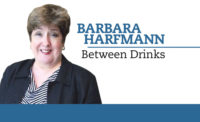Like many within the beverage industry, I have been keeping a watchful eye on the proliferation of taxes placed on sweetened beverages. However, my time of watching it from afar ended last month when Cook County, Illinois, enacted its penny-per-ounce tax on beverages sweetened with nutritive and non-nutritive sweetening solutions.
Although I live in a neighboring county, I see how this tax is impacting the retailers and shoppers in Cook County (let alone the areas that already have enacted their own sweetened beverage tax laws).
As many working within this industry know, these taxes extend to nearly all beverage categories (minus 100 percent juice, milk, milk alternatives, infant formula, medical-use beverages, therapeutic meal replacements, or syrup and powder mixes). Many retailers and consumers are noting the confusing nature of these taxes.
Another conflicting aspect is the inclusion of the non-nutritive sweeteners that are being touted by clean-label advocates. Solutions like stevia, erythritol and monk fruit have been embraced by this community and allow consumers to enjoy a sweetened component without the calories and align with emerging health-and-wellness trends.
These taxes also target an industry that has been at the front end of finding balance in today’s beverage consumption habits. Through the leadership of the American Beverage Association (ABA) and America’s beverage companies, full-calorie soft drinks have been removed from schools, more brands place calorie information on the front of their packages, more vending machines offer nutrition information and efforts are being made to reduce overall sugar consumption.
Through the ABA’s Balance Calories Initiative, the long-term commitment is increasing access to beverages with less sugar and smaller package sizes in communities where obesity rates are above the national average. This test-and-learn approach is an effort to help consumers make more informed decisions without hurting them where they might be the most vulnerable — their pocketbooks.




